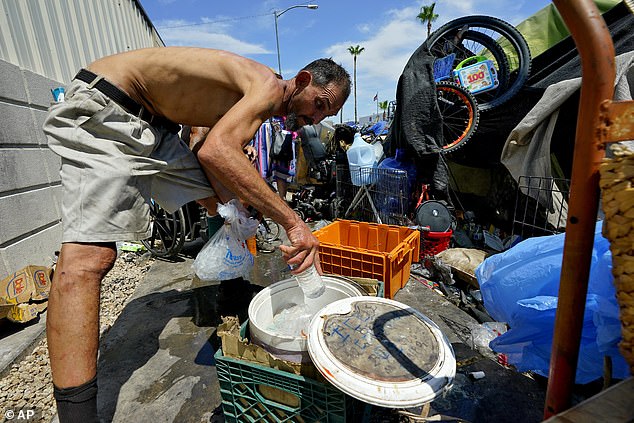Donald Trump’s agenda on Taking office on January 20 means deporting millions of immigrants and speeding up the economy by cutting taxes, red tape and bureaucracy.
But an issue that has rumbled for years has just erupted into a crisis and threatens the best-laid plans of the president-elect’s team.
He will return to the Oval Office after a staggering 18.1 percent increase in homelessness this year, according to surprising federal data released this week.
The United States Department of Housing and Urban Development (HUD) counted more than 771,000 homeless people in January 2024, a bitter legacy of the Biden administration.
During the election campaign, Trump promised to make housing more affordable for ordinary Americans and move homeless encampments beyond city limits.
But the growing crisis, which now leaves 23 out of every 10,000 people in the United States homeless, can only jeopardize Trump’s goals for his second term.
Obviously, this complicates his plan for the “largest deportation” in US history, given the number of immigrants working undocumented in construction.
In its 117-page report this month, HUD revealed that America’s homelessness crisis was spiraling out of control.
A familiar sight on the streets of American cities: Kevin Hendershot, who lives in a tent, in downtown Phoenix, Arizona.
The number of homeless people overall increased by almost a fifth, but some populations were hit much harder.
The number of homeless children increased by 33 percent; the number of entire families facing a night out grew by 39 percent.
Black people were found to be more likely than others to sleep on the streets, in abandoned buildings, cars or shelters.
California, the most populous state in the United States, continued to have the largest homeless population in the country, followed by New York, Washington, Florida and Massachusetts.
Officials attributed the sharp increase to a lack of affordable housing, the end of pandemic-era protections and people being uprooted by natural disasters.
That included the 5,200 Hawaiians who were housed in emergency shelters after a deadly wildfire devastated Maui in 2023.
They also blamed the flow of migrants across the southern border and into major U.S. cities, pushing shelters and other services to the limit.
In New York City, for example, asylum seekers accounted for about 88 percent of the increase in sheltered homeless people, HUD found.
Scenes of homeless drug addicts stumbling on sidewalks and fears of violence and petty crime have become a national political issue, and Trump mentioned it at 2024 campaign rallies.
In a video about homelessness released by his campaign, Trump said “hard-working, law-abiding citizens” were being marginalized and forced to “suffer at the whims of a deeply sick few.”
He promised to “ban urban encampments” and create “tent cities” for the homeless on “cheap land” where they would receive substance abuse treatment.

President-elect Donald Trump’s incoming administration has linked the housing shortage to rampant immigration
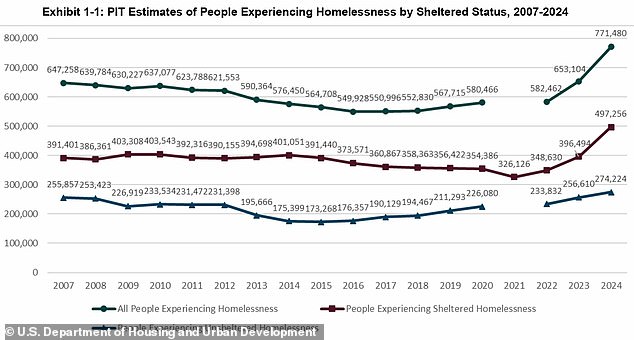
HUD counted more than 771,000 homeless people in its annual nightly survey in January 2024.
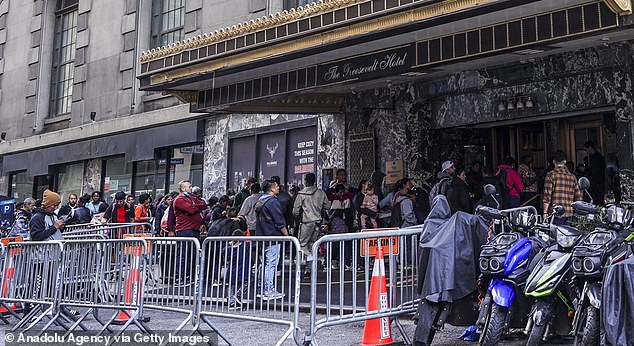
In New York City, asylum seekers accounted for most of the increase in sheltered homeless people.
“There is nothing compassionate about letting these people live in filth and squalor, instead of giving them the help they need,” Trump said.
Trump’s pick for HUD secretary, former NFL player Scott Turner, has opposed government housing welfare programs in the past, calling them “destructive.”
Trump’s deputy, Vice President-elect JD Vance, has linked high housing costs and homelessness to the millions of foreigners who have jumped the border in recent years.
“Illegal aliens competing with Americans for scarce housing is one of the biggest drivers of housing prices in the country,” Vance said.
Studies on whether immigration raises housing costs and whether a deportation campaign would reduce rents are inconclusive.
A mass expulsion of irregular immigrants would certainly free up space in homes and shelters, but it is unclear how this would reduce housing costs.
It would also cause undocumented workers to be expelled from the country, putting pressure on the construction sector and threatening the construction of new housing.
Trump’s transition team did not respond to DailyMail.com’s request for comment.
Still, Trump’s plan to get tough on homeless encampments resonates with voters.
Two-thirds of American adults said homelessness was out of control and urged officials to move rough sleepers to tent camps on the outskirts of towns and cities.
That’s according to a national DailyMail.com/TIPP survey of 1,401 adults in January, around the time of HUD’s annual homeless count.
Democratic-leaning respondents were more interested in relocating the homeless.
About 74 percent of them wanted homeless people to move on, compared to 64 percent of Republicans and 62 percent of independents.
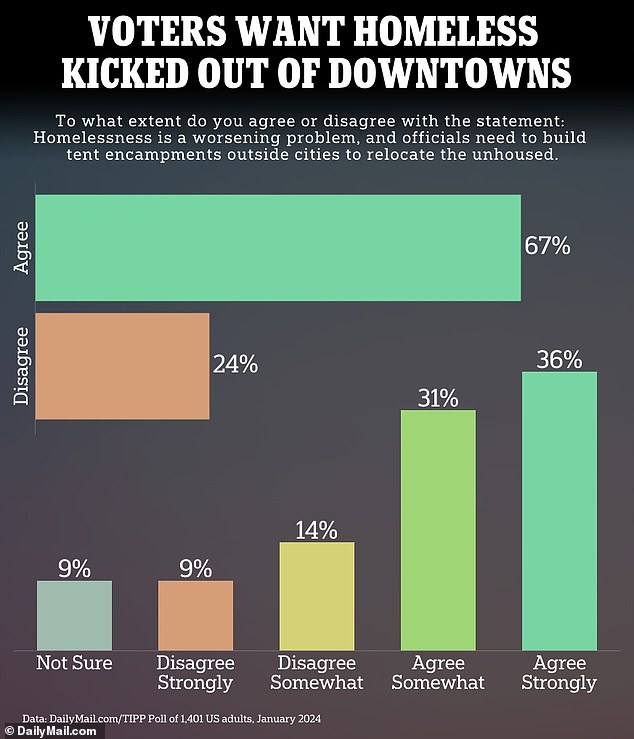
More than two-thirds of Americans say homelessness, which has increased 18.1 percent this year, is out of control.
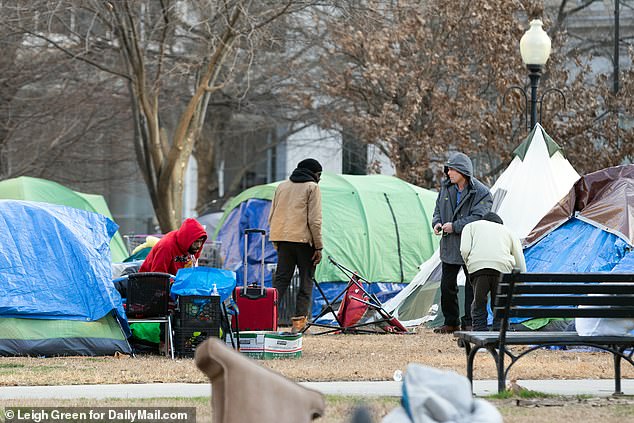
Washington DC has faced a growing and increasingly visible homelessness problem in recent years.
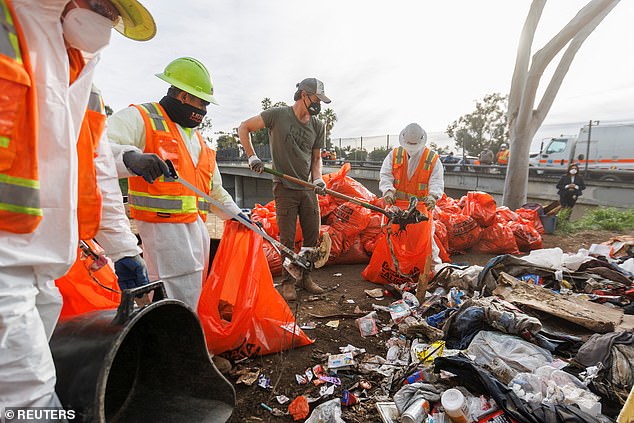
California Governor Gavin Newsom helps clean up a homeless encampment in San Diego, as Democratic officials take a harder line on the problem.
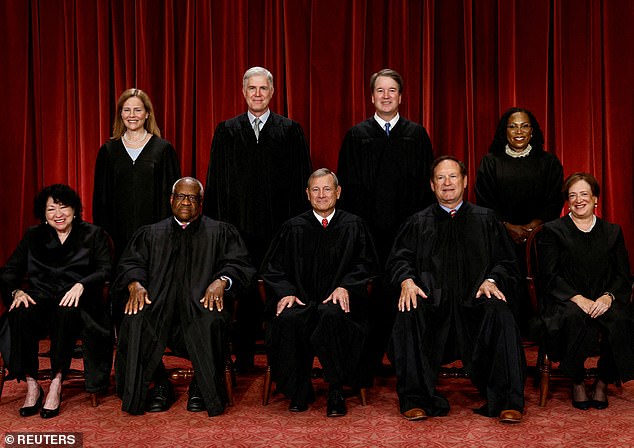
This year, the Supreme Court ruled that local officials can impose bans on sleeping outside.
Against this backdrop, Democratic mayors have begun to take a harder line on homeless encampments that drive down local home values.
Communities, especially in western states, have imposed camping bans as public pressure grows to address what some residents consider dangerous and unhealthy communes.
This follows a 6-3 ruling earlier this year by the Supreme Court that found that outdoor sleeping bans do not violate the Eighth Amendment.
Still, many homeless people and their advocates say raids and relocation policies are cruel and a waste of taxpayer money.
The answer, they say, is more affordable housing, not repressive measures.
Bill Wells, mayor of El Cajon, California, is among local Democratic officials who have changed their stance on homelessness.
Investing billions of taxpayer dollars in a “homeless industrial complex” of nonprofit housing organizations only deepened the problem, Wells recently wrote for Fox News.
Progressives were “financially subsidizing the lifestyle of homeless people, eliminating laws that kept communities safe and clean, normalizing addiction and destigmatizing vagrancy,” he added.
Instead, he called for “enforcing laws that prevent street living, while providing, and sometimes requiring, appropriate treatment.”
Likewise, the mayor of Los Angeles, Karen Bass, has expressed her willingness to work with Trump’s team on the homeless problem in her city.
Bass recently told the LA Times that he was “on the same page” as Trump officials about building temporary shelters on federal property.
The Democrat has been making progress against the scourge in America’s second-largest city, the HUD report showed.
Los Angeles, which has increased housing for the homeless, has seen a 5 percent drop in unsheltered homelessness since 2023.
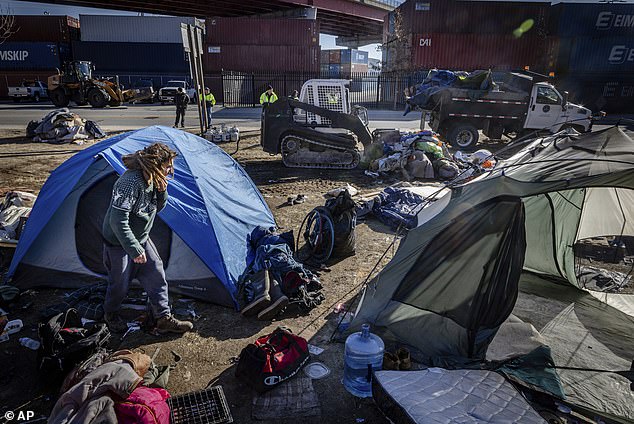
A city work crew arrives at a homeless encampment in Portland, Maine, to clean up tents and people.
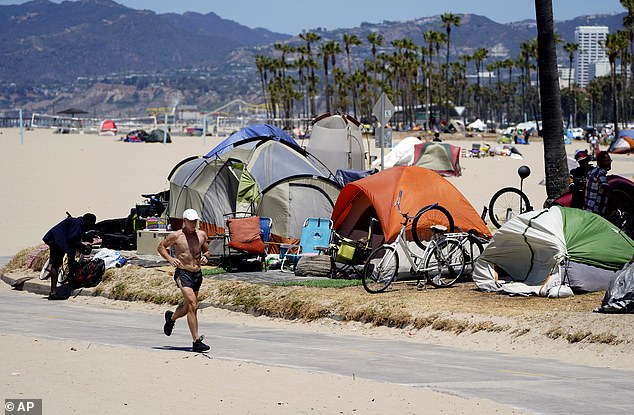
A jogger runs past a homeless encampment in the Venice Beach section of Los Angeles that has begun to make progress against the scourge.
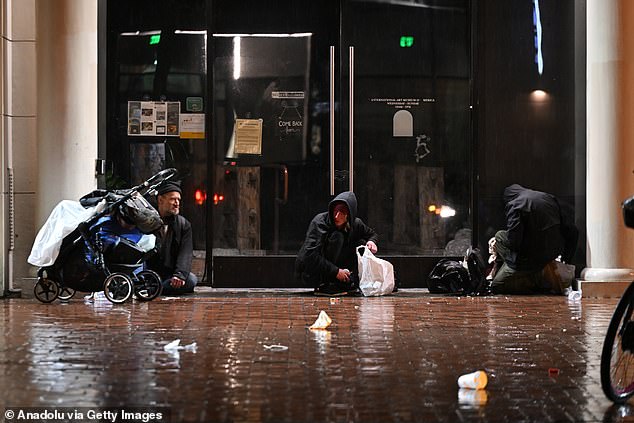
Homeless people are seen near City Hall during heavy rain in San Francisco, California.
Meanwhile, Dallas, Texas, which overhauled its homeless system, saw a 16 percent drop in its numbers between 2022 and 2024.
The HUD report also highlighted progress in getting more homeless veterans into homes: Their number fell 8 percent to 32,882 in 2024.
There was an even bigger drop for unsheltered veterans, falling 11 percent to 13,851 in 2024.
Ann Oliva, executive director of the National Alliance to End Homelessness, said there was a “clear roadmap to address homelessness on a larger scale.”
“With bipartisan support, adequate funding, and smart policy solutions, we can replicate this success and reduce homelessness across the country,” Oliva said.
The sharp increase in the homeless population in the last two years contrasts with the progress the country had seen for more than a decade.
Going back to the first survey in 2007, the United States made steady progress for about a decade in reducing homelessness, focusing on homeless veterans.
The number of homeless people decreased from approximately 637,000 in 2010 to approximately 554,000 in 2017.
The numbers rose to about 580,000 in the 2020 count and remained relatively stable over the two years following the COVID-19 outbreak.
Congress responded to the pandemic with emergency rental assistance, stimulus payments, aid to state and local governments, and a temporary eviction moratorium.
Homelessness rates have skyrocketed since those pandemic-era protections ended.


